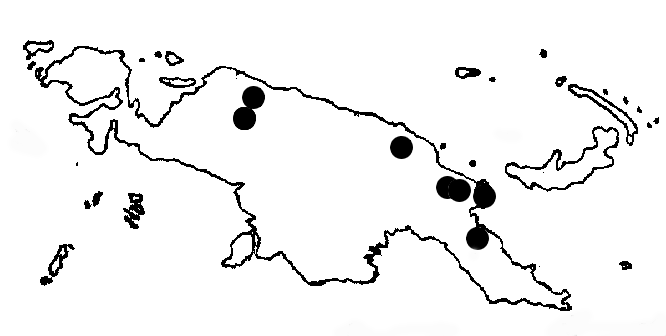
Distribution Map

Description (Barlow 1974)
Distrianthes molliflora (Krause) Dans. Bull. Jard. bot. Buitenz. 10: 312 (1929); 11: 367, illus. Fig. 16, q (1931); Blumea 3: 399 (1940); Loranthus molliflorus Krause, Bot. Jahrb. 57: 488 (1922); Engl. & Krause, Pfl. Fam. ed. 2 16b: 162 (1935). Type.-New Guinea, Kani Mountains, 1000 m alt., Schlechter 17784, 27.v.1908 (K).
Loranthus spathatus Krause, Bot. Jahrb. 57: 489 (1922); Engl. & Krause, Pfl. Fam. ed. 2 16b: 162 (1935); Distrianthes spathata (Krause) Dans. Bull. Jard. bot. Buitenz. 10: 312 (1929); 11: 367 (1931). Type-New Guinea, Torricelli Mountains, 800 m alt., Schlechter 20136 (B, not seen, probably destroyed).
Loranthus lamii Krause, Nov. Guin. 14: 104, illus. t. 9 (1923); Engl. & Krause, Pfl. Fam. ed. 2 16b: 162 (1935); Distrianthes lamii (Krause) Dans. Bull. Jard. Bot. Buitenz. 10: 312 (1929); 11: 366, illus. Fig. 16, p (1931); Blumea 3: 48 (1938). Type-West Irian, Doorman R., 240 m alt., Lam 1407, 27.ix.1920 (L 926134880).
Young vegetative parts shortly brown-tomentose; inflorescences and flowers sparsely to densely brown stellate-tomentose or (the calyx and corolla especially) clothed with silky hairs up to 2 mm long; other parts glabrous. Stems robust, terete, slightly to strongly enlarged at the nodes. Petiole up to 1 cm long; lamina broad lanceolate to elliptical, 12-25 by 4-12 cm, usually lustrous above and dull below, attenuate to contracted at the base, recurved at the margin, acute and usually acuml-nate at the apex; venation distinct on both sides and usually raised below. Inflorescences few in the axils and on the runners; peduncle funnel-shaped, c. 2 mm long, 2-4 mm wide and flat at the apex; central bracts broad lanceolate, acute, 12-30-(40) by 4-12 mm, strongly united at the margins, often with the sutures not visible, later separating nearly to the base or splitting irregularly; lateral bracts narrow-triangular, acute, 1-10 by 0.5 mm. Calyx broadly campanulate, 2-3 mm long, 2 mm wide; limb very short and obscured by silky hairs. Corolla in the mature bud slender, 40-65 mm long, acute; petals in the open flower united in the lower 12-50 mm. Anthers 3-4 mm long; free parts of the filaments 2 or 3 times as long. (Fig. 7, a-c.)
Occurrence. New Guinea, from the Doorman River, West Irian, to the Garaina area, Eastern New Guinea (Fig. 8), 130-1500 m altitude. Recorded altitudes are 130 and 240 m in West Irian and 900-1500 m in Eastern New Guinea.
Representative Specimens. WEST IRIAN: Bodem R. near Kevansem Biv., c. 200 km W. of Hollandia, c. 130 m alt., Vink BW 8445, 22.v.1959 (L; CANB). EASTERN NEW GUINEA: Above Sopa, Morobe Dist., 1500 m alt., Hartley 10351, 19.vi.1962 (CANB; L).
Distrianthes mollflora is somewhat variable in indumentum, in inflorescence
dimensions, and in the degree of fusion and eventual separation
of the involucral bracts. The type of D. lamii falls clearly
within this range of variation, and D. lamii was treated
as a synonym of D. molliflora by Danser (1938). Distrianthes
spathata is known only from the type collection, which was
not seen in the present study, but which, from Danser's description
of it, is probably also insufficiently distinct.
Illustrations
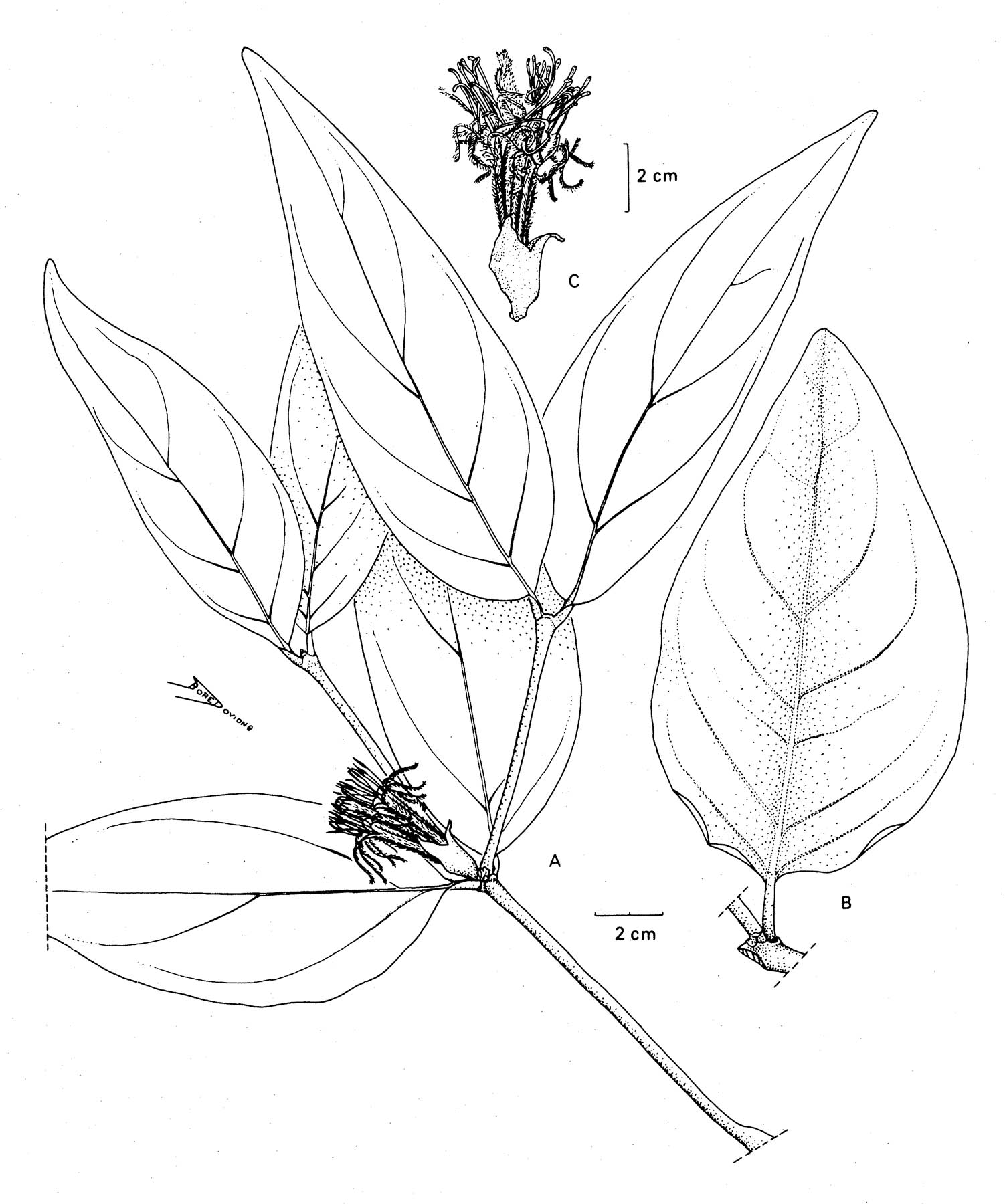
Distrianthes molliflora. A - twig with inflorescence. B - leaf. C - flower. From Barlow (1981).
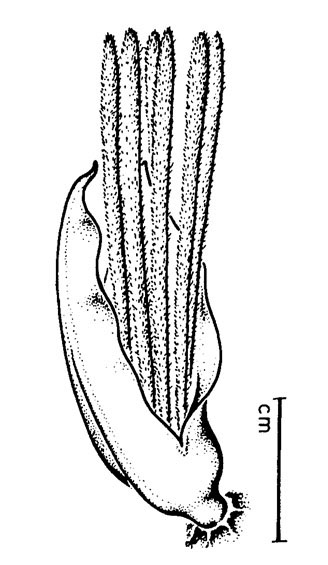
Distrianthes. Inflorescence on epicortical root. Clemens 819a, L. From Kuijt (1981).
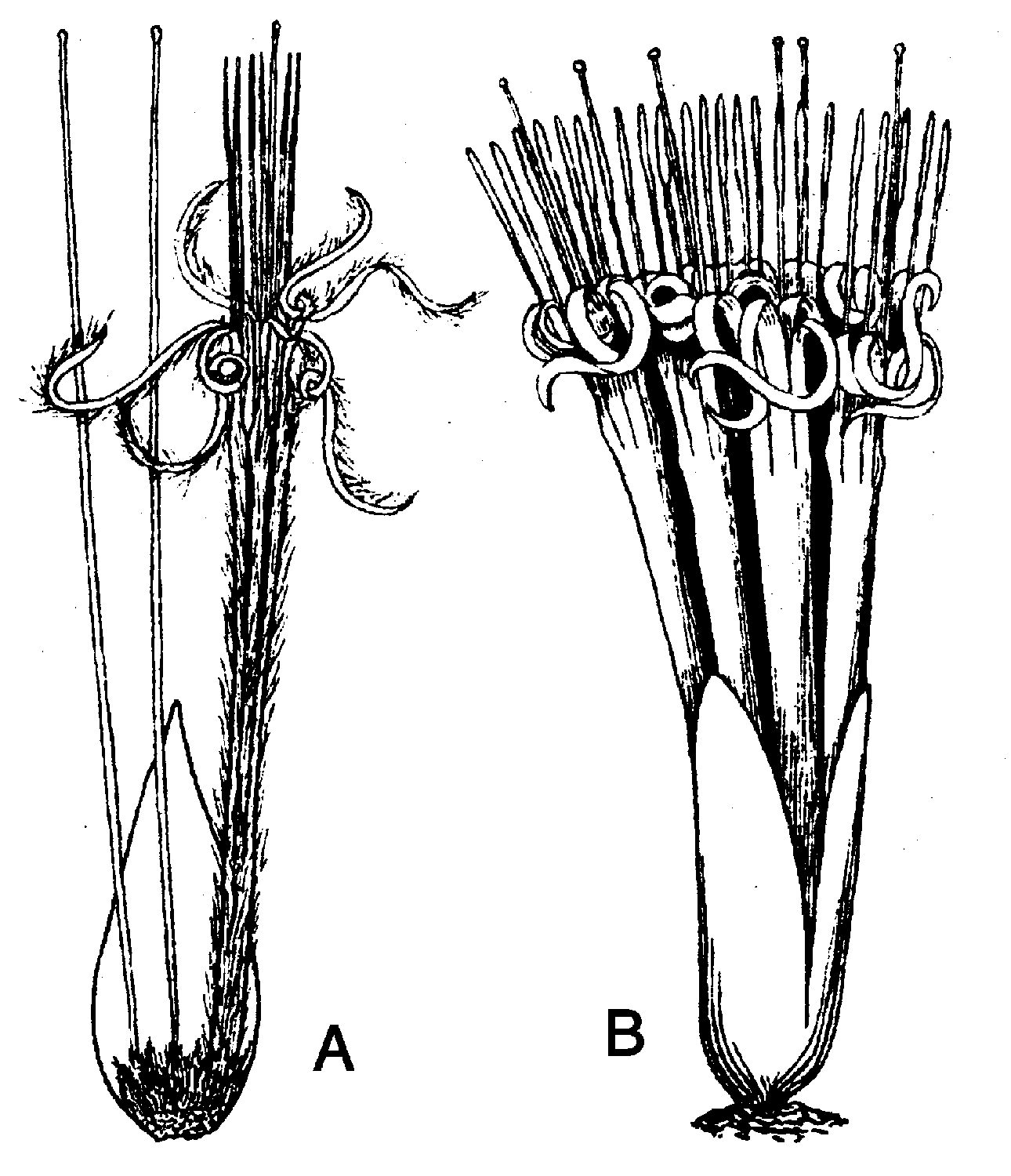
Distrianthes. A - D. molliflora, half an inflorescence. B - D. molliflora (as D. lamii), inflorescence. From Danser (1931).
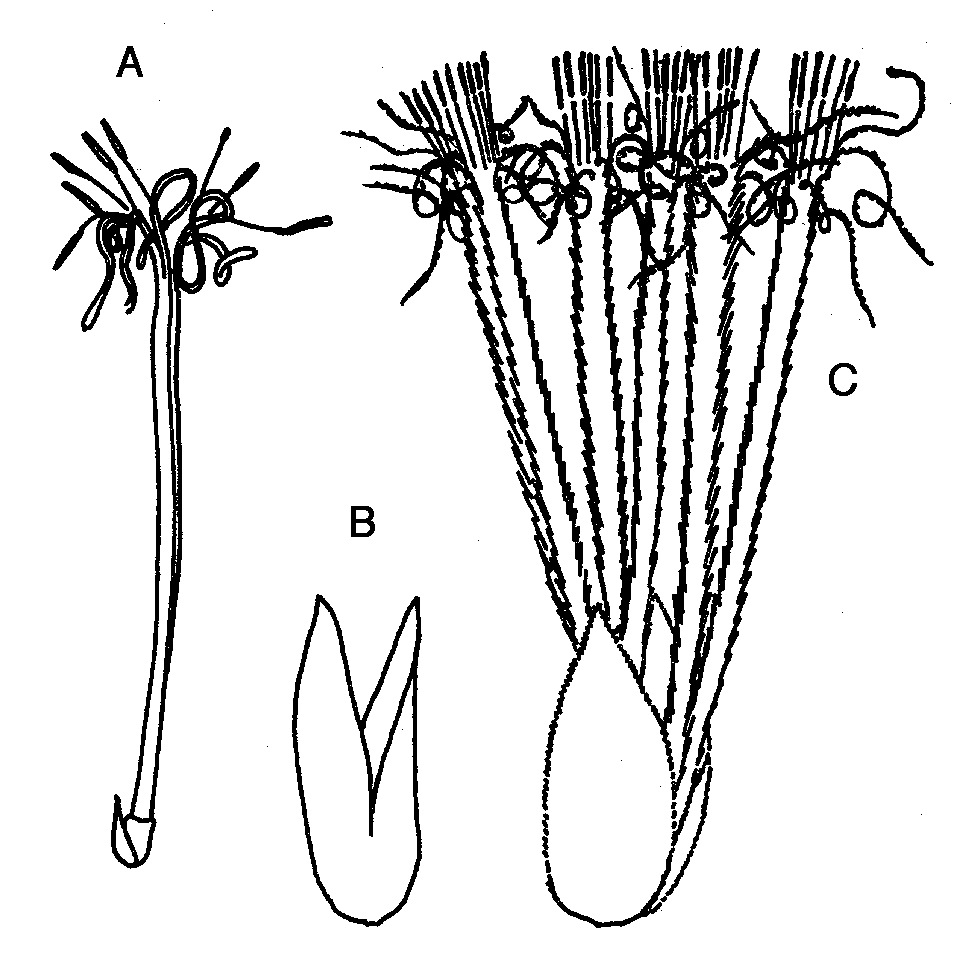
Distrianthes molliflora. A - flower (Vink BW 8445). B - inflorescence bracts (Vink BW 8445). C - inflorescence (Hartley 10351). From Barlow (1974).
Photographs
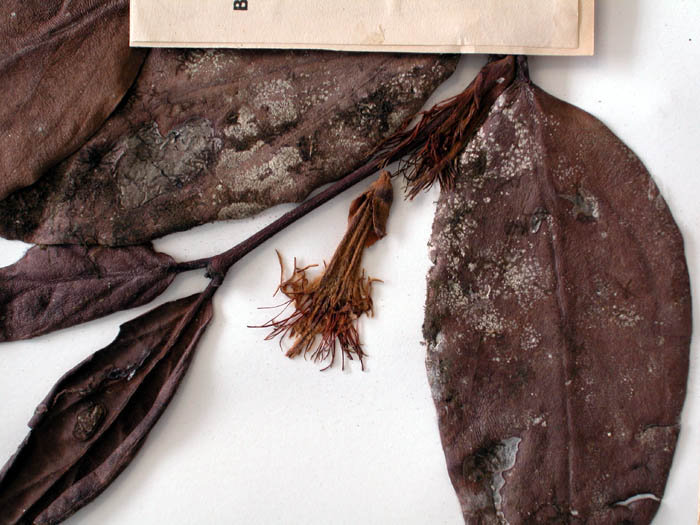 \
\
Wantoat, Morobe District, Papua New Guinea. Collected by K. J. White (N.G. F. 9524), 24 June 1957.
Distrianthes molliflora
updated 20 January 2007